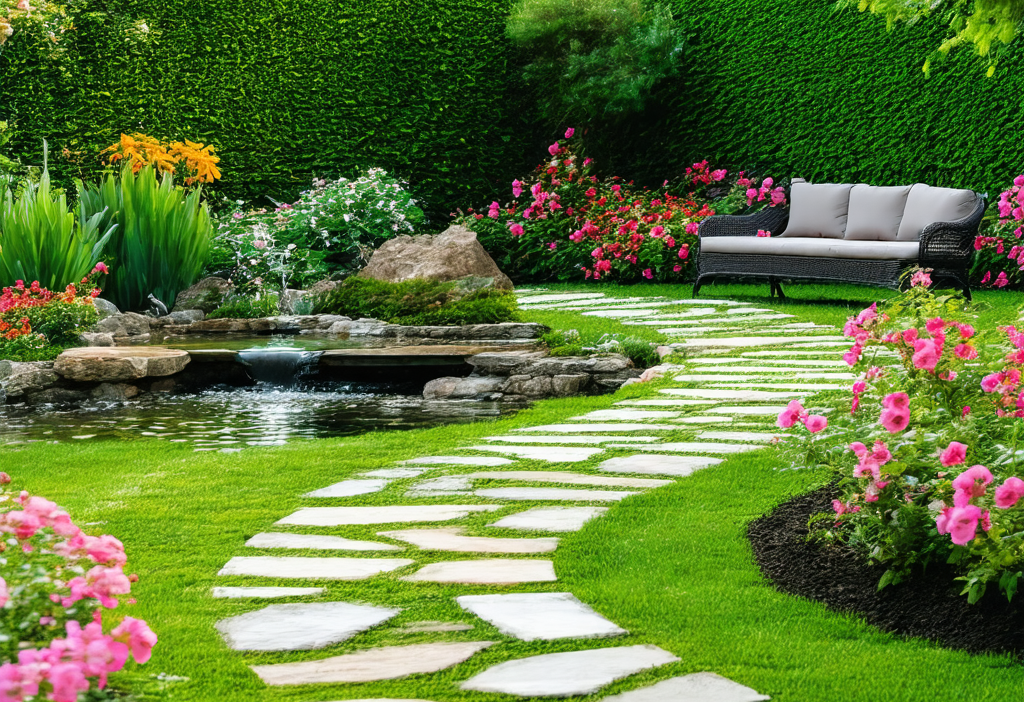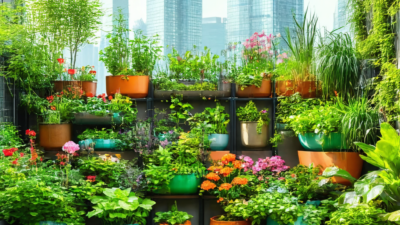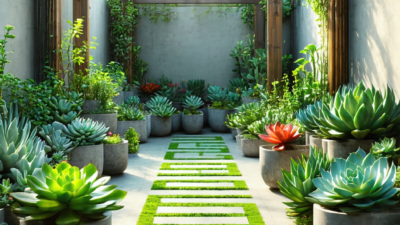How to Create an Optimal Garden Layout: A Step-by-Step Guide
Gardening is more than just planting flowers; it’s about creating a space that brings joy, relaxation, and functionality to your outdoor living area. Whether you’re starting from scratch or redesigning an existing garden, crafting the perfect layout can feel overwhelming. But with the right approach, you can create a garden that not only looks stunning but also serves as an extension of your home.
1. Assess Your Space
Before diving into design, take stock of what you have. Consider the size and shape of your garden, as well as its orientation to the sun. Lighting is key; some plants thrive in full sun, while others prefer shade. Sketch out your space, noting existing features like trees, fences, or walkways.
- Measure the dimensions of your garden.
- Identify areas that receive direct sunlight versus shaded spots.
- Note any natural features that can be incorporated into your design.
For example, if you have a large tree in the center of your yard, consider using it as a focal point. If your garden is narrow, vertical gardening techniques could maximize space usage.
2. Define Your Goals
What do you want your garden to achieve? Is it a place for relaxation, entertaining guests, or growing vegetables? Defining your goals will guide your design choices. If you’re aiming for a low-maintenance garden, consider drought-resistant plants and easy-to-manage materials like gravel paths.
“The best gardens are those that reflect the personality of the gardener.” – Unknown
Think about how you want to use your space:
- Do you need a dining area for outdoor meals?
- Would you like a dedicated spot for kids or pets to play?
- Are you passionate about growing your own herbs or vegetables?
Your answers will help prioritize features and allocate space effectively.
3. Plan the Layout
With goals in mind, it’s time to sketch out a rough plan. Start by identifying key zones:
- Entry Zone: Welcome visitors with a decorative element like a garden statue or colorful flowers.
- Living Zone: Create a seating area where you can relax or entertain guests. Use outdoor furniture and a rug for coziness.
- Dining Zone: If entertaining is important, designate an area for dining with a table and chairs.
- Activity Zone: Include space for gardening tools, compost bins, or a kids’ play area.
Consider the flow between these zones. Pathways should connect areas naturally, making it easy to move from one zone to another without stepping on flower beds.
4. Choose the Right Plants
Selecting plants is where your garden truly comes to life. Consider a mix of perennials, annuals, shrubs, and trees for year-round interest. Here are some tips:
- Layer your plants: Start with taller plants at the back or center, then medium-height plants, followed by low-growing varieties in front.
- Consider color schemes: Choose colors that complement each other and reflect your personality. Monochromatic gardens can be just as striking as bold color contrasts.
- Add texture: Mix smooth-leaved plants with fuzzy or spiky varieties to create visual interest.
If you’re unsure where to start, consider visiting local nurseries or consulting gardening guides like those from Garden Design.
5. Incorporate Hardscaping Elements
Hardscaping adds structure and functionality to your garden. Think about materials that will enhance your space without overwhelming it:
- Pathways: Use gravel, stone, or pavers for durable yet attractive walkways.
- Seating Areas: Add a bench, swing, or built-in seating to create inviting spots to relax.
- Fencing and Walls: These can define boundaries, provide privacy, and add vertical interest.
Don’t forget lighting! Solar-powered lights or string lights can transform your garden into a magical evening retreat. For inspiration, check out Container Gardening HQ‘s guide to outdoor lighting ideas.
6. Add Personal Touches
A great garden reflects its owner’s personality. Incorporate elements that make your space uniquely yours:
- Add a water feature like a small fountain or pond.
- Display art pieces, sculptures, or heirloom items.
- Create a living wall or hanging garden if space is limited.
Your garden should be a place where you can unwind and feel connected to nature. By thoughtfully planning your layout, choosing the right plants, and adding personal touches, you’ll create a space that brings joy year-round.
7. Maintenance Tips
A well-designed garden is easier to maintain, but regular care is still essential:
- Mulch around plants to retain moisture and suppress weeds.
- Water deeply but infrequently, encouraging roots to grow strong.
- Prune plants as needed to keep them healthy and tidy.
Remember, gardening is a journey. Don’t be afraid to experiment and evolve your design over time!





